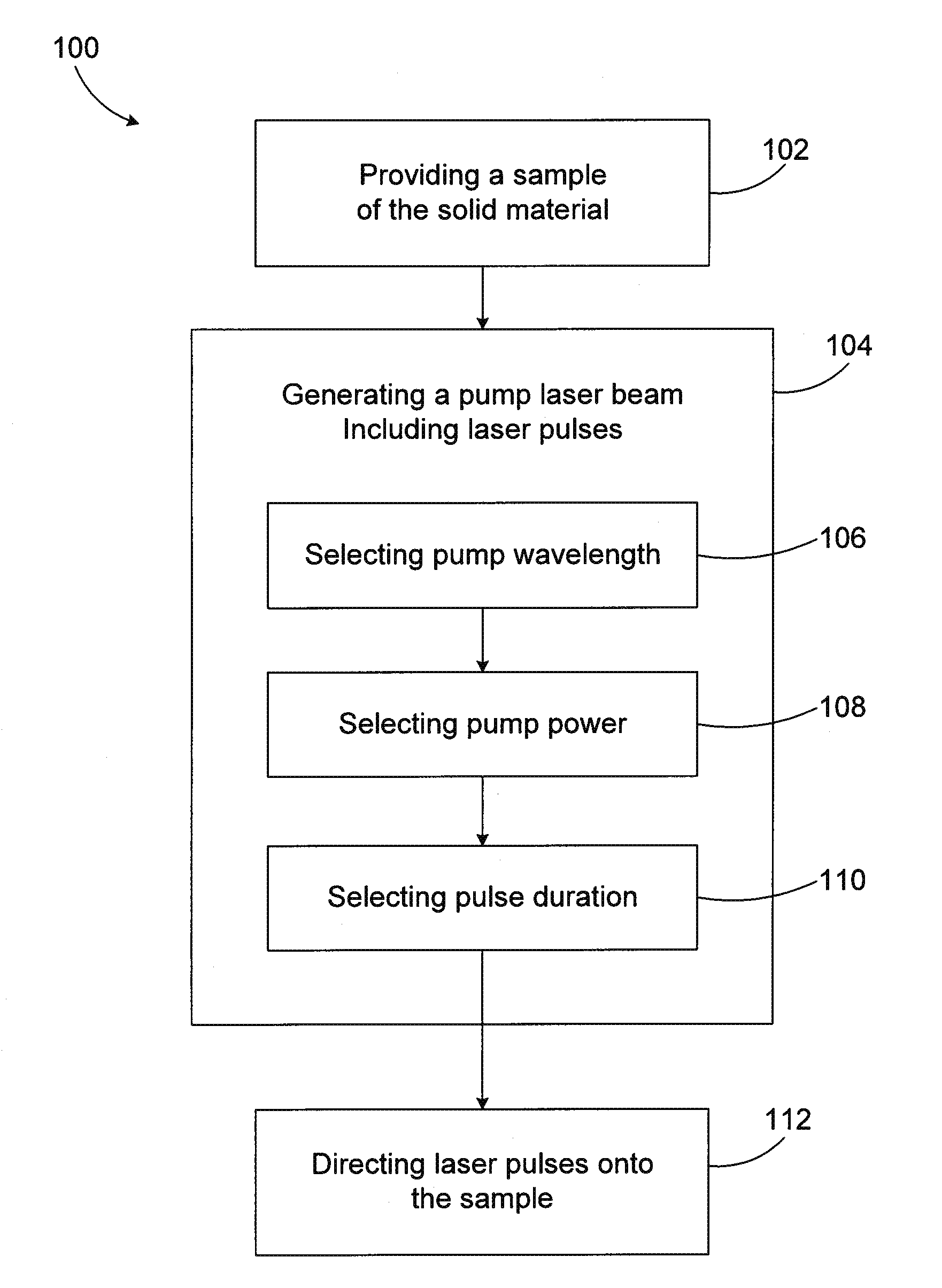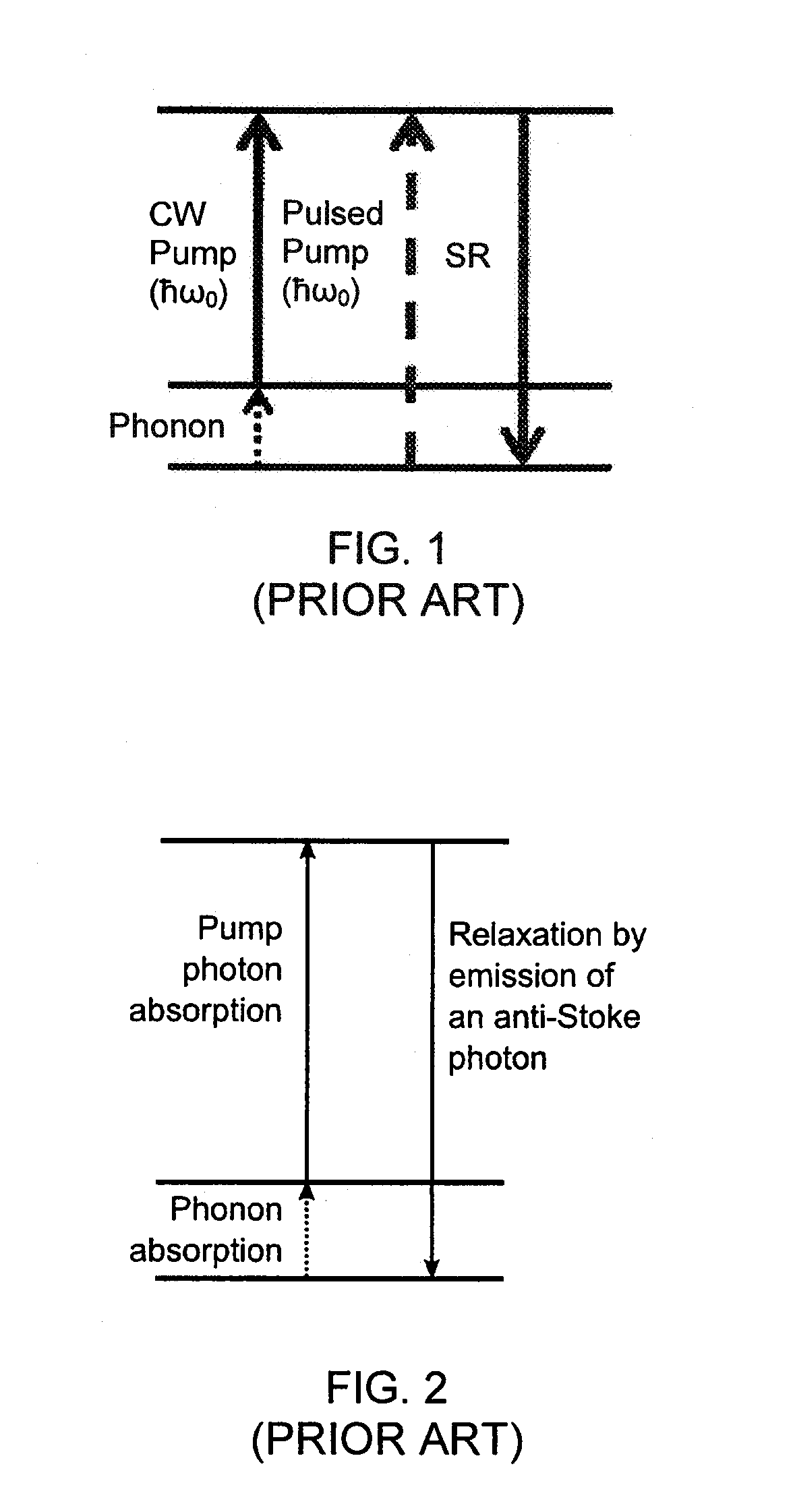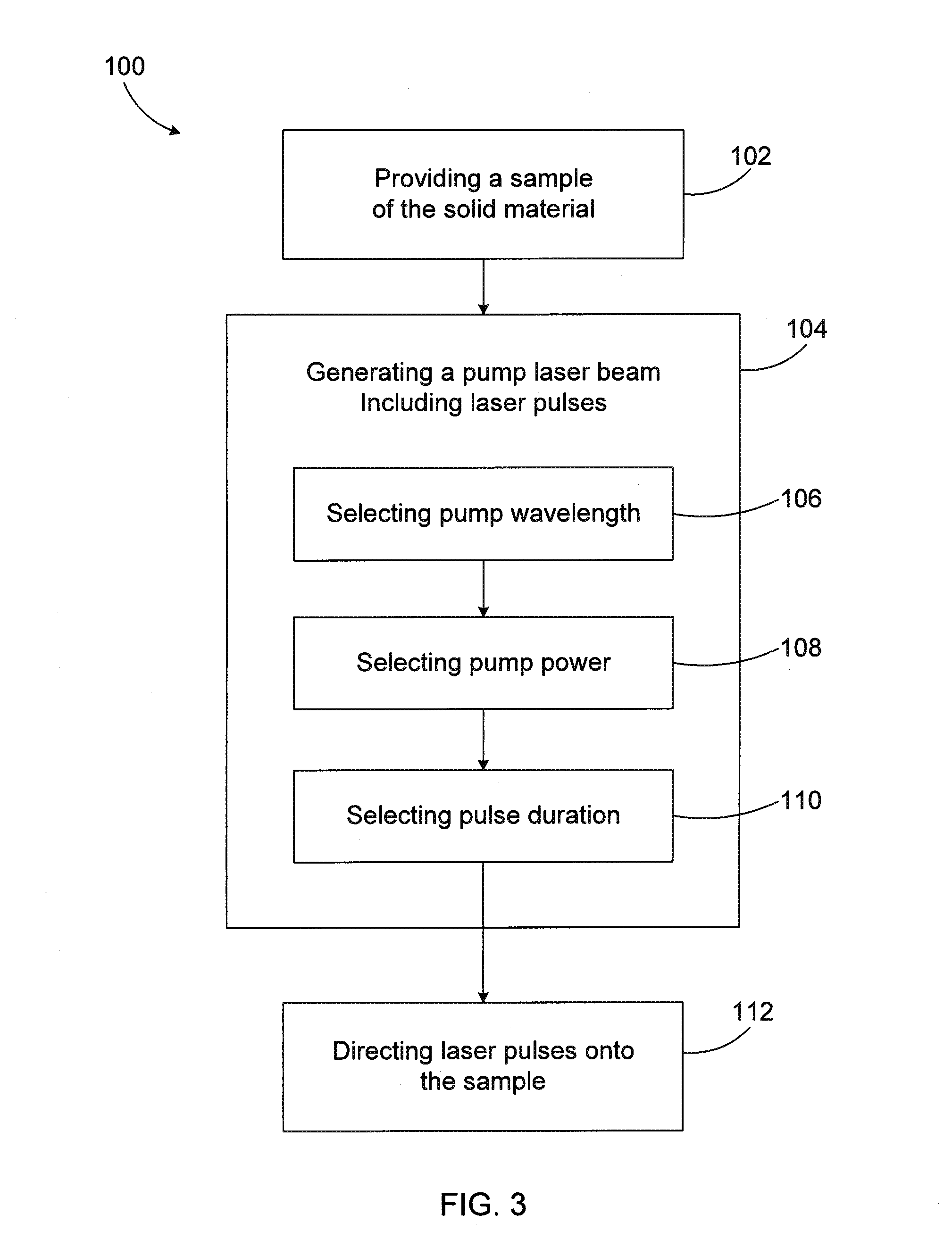Methods for laser cooling of fluorescent materials
a fluorescent material and laser cooling technology, applied in the field of light-matter interaction, to achieve the effects of reducing temperature, reducing radiation, and improving the cooling cycl
- Summary
- Abstract
- Description
- Claims
- Application Information
AI Technical Summary
Benefits of technology
Problems solved by technology
Method used
Image
Examples
Embodiment Construction
[0052]The present invention generally relates to methods for cooling a fluorescent material with laser radiation. As known in the art, laser cooling of materials, also referred to as optical refrigeration, optical cooling or anti-Stokes fluorescence, may occur in a fluorescent material that absorbs pumping laser radiation at one wavelength and subsequently emits fluorescent radiation that has an average wavelength shorter than that of the pumping laser radiation.
[0053]It is known in the art that an electron may be excited by a photon having an energy corresponding to a difference in energy between two atomic levels. Moreover, it is also known that phonons—quanta of vibrational energy that generates heat—may also be part of the excitation process of an electron by being absorbed thereby, along with a pump photon, in order to provide the appropriate energy for promoting the electron to an upper atomic level. Accordingly, when the excited electron relaxes in a radiative way, the emitte...
PUM
 Login to View More
Login to View More Abstract
Description
Claims
Application Information
 Login to View More
Login to View More - R&D
- Intellectual Property
- Life Sciences
- Materials
- Tech Scout
- Unparalleled Data Quality
- Higher Quality Content
- 60% Fewer Hallucinations
Browse by: Latest US Patents, China's latest patents, Technical Efficacy Thesaurus, Application Domain, Technology Topic, Popular Technical Reports.
© 2025 PatSnap. All rights reserved.Legal|Privacy policy|Modern Slavery Act Transparency Statement|Sitemap|About US| Contact US: help@patsnap.com



